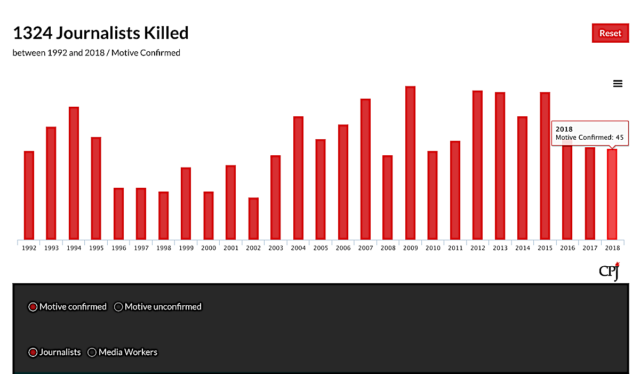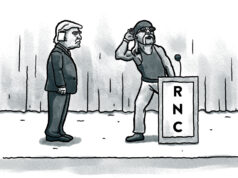

Call it paranoia or call it a shrewd safety precaution: American newsrooms are focusing more on security during a year that has seen violent attacks on journalists and the high-profile murder of an internationally important columnist.
Without detailing specific precautions at specific publications in Oklahoma, suffice it to say journalists and their bosses are rightfully worried about attacks like the June 28 Capital Gazette newsroom shooting that left five people dead in Maryland.
About two months after that attack, a man tried to drive a truck into the building of a Dallas TV station. About seven weeks after that, a Florida man began sending threatening devices to political figures and CNN.
And between the dates of those two events, Saudi Arabian journalist Jamal Khashoggi was murdered inside the Saudi consulate in Istanbul. Despite reports that Saudi Crown Prince Mohammad bin Salman knew about the attack on Khashoggi, U.S. President Donald Trump has waffled in his statements on the matter, recently drawing rebuke from even Republicans in Congress.
‘The enemy of the people’
Trump’s overt alignment with Saudi interests as opposed to the slain journalist might appall many, but it should hardly surprise. Since his campaign began in 2015, the president has intentionally criticized journalists as “terrible people,” sometimes identifying networks and publications making errors.
Yet Trump’s disdainful diction has painted broadly across the media industry, infamously calling top networks and publications “the enemy of the people” in February 2017. Three months later, Montana GOP Congressman Greg Gianforte — then a candidate — assaulted a journalist who asked him a question about health care. During Gianforte’s 2018 re-election bid, Trump made light of and praised the incident during a stump speech.
With views like those, it seems unlikely that President Donald Trump will seek justice for Jamal Khashoggi. But with the Capital Gazette asking what can we do to prevent the next mass shooting, journalists will remain as on edge as ever, working to tell difficult stories in their communities while wondering — in the backs of their minds — whether the next unhinged email or Facebook comment they receive might be a precursor to violence.
Unhinged escalations cause death, destruction
Of course, calls for civility in political discourse are often met with supposedly-righteous anger from readers or viewers on the left, the right or both. We should know.
Instead, some of our most passionate fellow citizens firmly believe extreme measures must be taken to shake up power structures that oppose their goals. While such frustrations are often justified and while strong action can spur results, those who smudge the rhetorical line between pushing and punching leave many fearing unhinged escalations that cause death and destruction.
For members of the media — whose reports often draw criticism from one set of people Monday and a separate group Tuesday — the violent events of 2018 have served as a reminder that we, too, might be targeted. This year’s murders of journalists have crystalized the theoretical, and so far we have only mentioned those killed in the U.S.
The Committee to Protect Journalists maintains a database of the murders of journalists, which is searchable and shows how much more dangerous the profession is in other parts of the world. With 45 journalists killed this year alone, the numbers underscore the risks media face when rhetoric ramps up against them.
So with that in mind as you read this and other news outlets, please feel free to disagree vociferously in the comments — or submit a letter to the editors for publication — but please fight the urge to embrace narratives that journalists are evil or your enemy.




















